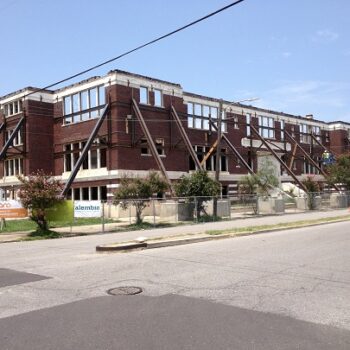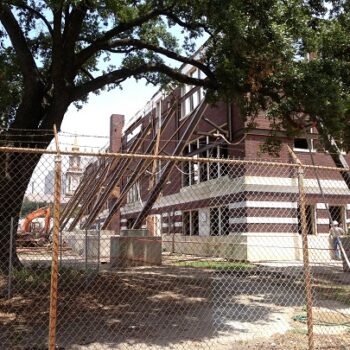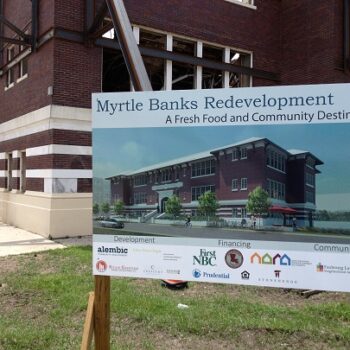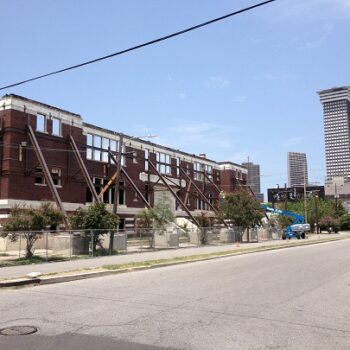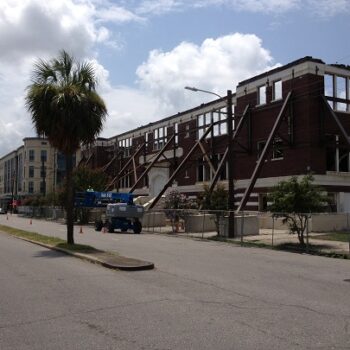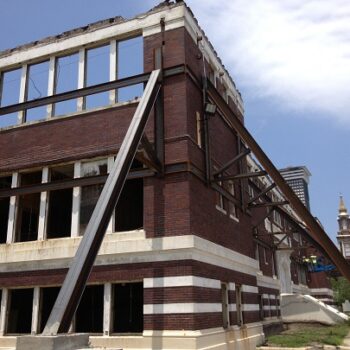At its mid-20th century heyday, the Oretha Castle Haley Boulevard corridor – then called Dryades Street – was simultaneously a welcoming retail area for New Orleans’ African American population and the center of Orthodox Judaism for the region. By the 1970s, however, the street was in steep decline, with the relocation of synagogues to the suburbs and the retail strip’s raison d’être removed by desegregation. For nearly 40 years, repeated revitalization attempts consistently faltered, despite O.C. Haley Boulevard’s proximity to both downtown New Orleans and St. Charles Avenue.
Since 2005 investment in the corridor has slowly gathered steam, with non-profit groups like Café Reconcile joining with public bodies like the New Orleans Redevelopment Authority (NORA) to focus on the O.C. Haley corridor. Amidst this gathering momentum, New Orleans-based Alembic Community Development identified the former Myrtle Banks School as a prime target for redevelopment. Constructed as McDonogh 38 Elementary School in 1910, the historic structure was deemed surplus in 2002 and closed. A dramatic fire ravaged the shuttered property in 2008, transforming it into an enormous, conspicuous eyesore one block away from NORA’s new headquarters building. Undaunted, Alembic envisioned the adaptive re-use of the school building as a commercial office and fresh food hub for the surrounding low income community.
While Alembic had successfully completed a number of projects employing Low-Income Housing Tax Credits, Myrtle Banks presented the development company with its first opportunity to use New Markets and historic tax credits. In July 2011, Alembic hired Crescent Growth Capital to structure and close the financing for the project. After nearly two years of work, the financing for Myrtle Banks closed in May of 2013, with CGC incorporating New Markets Tax Credit, federal and state historic tax credits, a subordinated loan, sponsor equity, and CDBG dollars sourced from NORA and Louisiana’s Office of Community Development to fund the $13.8 million redevelopment of the school.
Now under construction, the Myrtle Banks Redevelopment will be anchored by a 23,000 square-foot grocery store, the Dryades Public Market, which will seek to make available locavore produce at an affordable price point.
The Myrtle Banks redevelopment also features 10,000 square feet of landscaped green space/edible landscape and 11,000 square feet of small business office space; 25-30 permanent, full-time jobs will be created.






